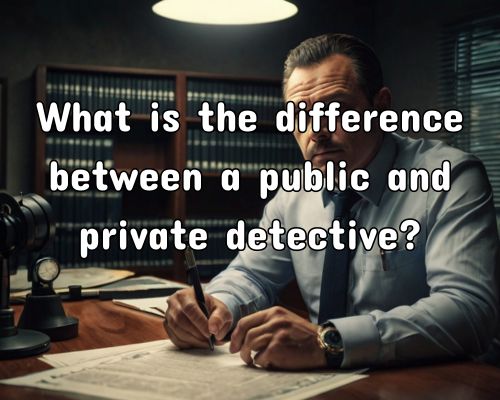How Do You Clean Gutters You Cannot Reach? Tips and Solutions
Cleaning gutters that you cannot easily reach may seem like a challenging task, but it’s certainly manageable with the right tools and techniques.
Using a gutter cleaning wand or a high-pressure water flusher allows you to clean from the safety of the ground, reducing the need for ladders that can pose a risk. These tools are effective at dislodging and rinsing out debris, ensuring that your gutters remain clear and functional.

For more persistent clogs, consider using a gutter cleaning robot. These devices can navigate through your gutters, effectively removing stubborn debris. Alternatively, professional gutter cleaning services offer extensive expertise and the necessary equipment to handle high gutters, making them a reliable option for those looking for a hands-free solution.
Mike Owen from Gutters Of West Palm Beach has to say “Incorporating gutter protection systems can also minimize the frequency of maintenance required. These systems prevent leaves and large debris from entering your gutters, keeping them cleaner for longer periods. This proactive step can save you time and effort, allowing you to maintain clean gutters with minimal intervention.”
Understanding Your Gutter System
To effectively clean hard-to-reach gutters, it’s essential to have a clear understanding of your gutter system. This includes recognizing the different types and the common issues that may arise, especially when those gutters are inaccessible.
Types of Gutters and Their Access Challenges
Gutters come in various styles and materials, each presenting unique challenges for cleaning.
K-style gutters, with their flat backs and bottoms, might provide more stability for installation but can trap more debris due to their shape.
Half-round gutters are aesthetically pleasing and easier to clean due to their smooth, curved shape, but they often require mounting brackets that can obstruct cleaning tools.
Box gutters, frequently used in commercial buildings, are integrated into the roof structure, making access particularly difficult without professional equipment.
Some materials like aluminum and vinyl are lightweight and easier to manage, whereas copper and steel gutters are sturdier but can be heavier and more challenging to maintain. Knowing your gutter type is crucial for choosing the best cleaning method and tools.
Common Issues with Inaccessible Gutters
Inaccessible gutters have several common issues that can impact your home’s roof and overall drainage system.
One frequent problem is clogging, which can lead to water overflow, causing damage to your roof and foundation. Leaves, twigs, and other debris can easily accumulate, especially in homes surrounded by trees.
Sagging gutters are another concern. When gutters become clogged, the weight of the trapped water and debris may cause them to sag or even detach from the house. This not only hampers functionality but also poses a safety risk.
Another issue is the formation of ice dams in colder climates. Inaccessible gutters allow ice to build up, which can push water under the roof shingles, leading to leaks and interior water damage. Regular inspections and proactive maintenance are essential to avoid these problems.
Safe and Effective Cleaning Strategies
Addressing hard-to-reach gutters requires proper tools, techniques, and preventive measures to ensure safety and efficiency.
Tools and Equipment for Reaching High Gutters
Cleaning tall gutters often necessitates specialized tools.
An extension ladder with a ladder stabilizer provides stability, minimizing risk.
Additionally, an extension pole can help reach distant places, allowing you to attach various cleaning tools like a gutter scoop or a brush.
Leaf blowers and wet/dry vacs are excellent for removing debris efficiently. A garden hose with a high-pressure nozzle or even a pressure washer can be useful for flushing out remaining dirt.
Gutter guards can be installed to reduce the frequency of cleaning.
If you do not have any of the equipment, you can refer to a professional like Mike Owen from Gutters Of West Palm Beach for a secure and fast work.
Step-by-Step Cleaning Without a Ladder
Cleaning gutters without a ladder involves creativity and the right apparatus.
You can use an extension pole attachment to hold a hose or a gutter cleaning tool.
Start by positioning yourself on safe ground.
Attach a wet/dry vac or leaf blower to an extension pole to blow out leaves and debris.
Next, use a garden hose with a high-pressure nozzle to wash out the remnants.
Finally, use a downspout testing tool to ensure water flows freely.
Preventative Measures and Gutter Maintenance
Preventive measures can save you time and effort.
Installing gutter guards or gutter covers helps to keep large debris out.
Regular inspections are also important, particularly before and after extreme weather.
Check for blockages in the downspouts using a hose to flush water through.
Removing any debris early prevents clogging and water damage.
Professional gutter cleaners can offer thorough inspections and cleaning services, ensuring that your gutters are well-maintained.
Regular maintenance and the correct tools will keep your gutters clear and functioning efficiently.
Should Landlord Pay for Gutter Cleaning? Understanding Responsibilities and Costs
When leasing a property, understanding who bears the responsibility for gutter cleaning can be a concern.

Based on Mike Owen from Gutters Of West Palm Beach “Typically, landlords are responsible for maintaining the property’s exterior, which includes gutter cleaning. This ensures that the home remains in good condition and prevents potential water damage. However, the specifics can vary, depending on the lease agreement.”
You must carefully review your lease agreement, as some contracts explicitly assign gutter cleaning and other exterior maintenance tasks to the tenant.
In these cases, the tenant is required to keep the gutters free of debris to avoid damage. If the lease is vague, it’s essential to discuss and clarify responsibilities with your landlord to prevent misunderstandings.
Understanding the division of responsibilities regarding outdoor maintenance helps maintain a good relationship between you and your landlord and ensures the property remains in optimal condition.
This article will explore various aspects of gutter cleaning responsibilities, providing clear guidelines on what you should expect in different scenarios.
Understanding Lease Agreements and Responsibilities
Understanding the specific responsibilities outlined in a lease agreement can clarify who should handle gutter maintenance.
Responsibilities can vary based on the lease agreement, statewide laws, and the specific terms agreed upon by the landlord and tenant.
Overview of Landlord and Tenant Responsibilities
In a lease, landlords typically handle major structural repairs, like fixing the roof or ensuring the home’s exterior remains intact. Tenants are generally responsible for keeping the property clean and reporting issues promptly.
Landlord responsibilities:
- Roof repairs
- Structural integrity
- Major exterior maintenance
Tenant responsibilities:
- Regular cleaning
- Reporting damages
State Laws Governing Rental Properties
State laws often dictate what is legally required from both landlords and tenants.
Some states mandate that landlords maintain habitable conditions, which may include gutter upkeep.
Renters should familiarize themselves with local regulations. Check state and local guidelines to understand both rights and obligations.
Assessing Liability for Gutter Maintenance
Liability largely depends on what the lease explicitly states. A clause about exterior maintenance can allocate this responsibility to the tenant. If not mentioned, landlords often bear the responsibility.
Key points to assess:
- Presence of a specific gutter clause
- General exterior maintenance clauses
- Provisions for shared maintenance
Determining Upkeep and Repairs Obligations
Figuring out who handles upkeep and repairs is crucial.
If the lease specifies that tenants must handle minor maintenance tasks, gutter cleaning might fall under their duties. For major repairs, landlord responsibility is more common.
Important aspects:
- Lease clauses on maintenance
- Distinction between minor upkeep and major repairs
- Shared responsibilities
Practical Aspects of Gutter Cleaning
Gutter cleaning is a crucial task to maintain the structural integrity of any property.
Understanding the frequency and necessity, consequences of neglect, the benefits of hiring professionals like Mike Owen from Gutters Of West Palm Beach, and effective communication can prevent disputes.
Frequency and Necessity of Gutter Cleaning
Cleaning gutters regularly is essential for maintaining the home’s exterior and preventing water damage. Most experts recommend cleaning gutters at least twice a year, particularly in spring and fall. However, properties surrounded by trees may require more frequent cleanings.
Neglecting to clean your gutters can lead to clogged gutters, which causes water to overflow and damage the foundation, roof, and exterior walls.
Regular cleaning ensures that gutters function correctly, directing water away from the property.
Implications of Neglected Gutter Maintenance
Neglecting gutter maintenance can have severe consequences.
Clogged gutters can lead to water damage, affecting the roof, walls, and even the foundation. This can cause leaks, mold growth, and structural issues, exponentially increasing repair costs.
Furthermore, stagnant water in clogged gutters can attract pests like mosquitoes. This not only poses a health risk but can also become a liability issue.
Routine cleaning is a preventive measure against these damaging effects.
Hiring Professional Gutter Cleaning Services
Hiring professional gutter cleaning services offers several benefits.
Professionals have the necessary tools and expertise to clean gutters safely and effectively. This minimizes the risk of accidents, especially those related to ladder use.
Professional services also often include additional inspections, identifying potential issues like roof damage or drainage problems early on. Though it incurs a cost, professional cleaning can save money by avoiding extensive repairs and ensuring thorough maintenance.
Effective Communication to Prevent Disputes
Clear communication between landlords and tenants about gutter maintenance responsibilities can prevent conflicts.
It’s crucial to specify who is responsible for gutter cleaning in the lease agreement. This helps avoid misunderstandings and ensures that responsibilities are clearly defined.
Regularly checking in and reminding tenants about their obligations, if applicable, can further reduce disputes.
If the lease is vague, renegotiate terms to include explicit mentions of gutter maintenance to maintain a well-functioning property.
What is the Highest Salary for a Special Agent? Exploring Top Earnings and Benefits
When exploring careers within the federal law enforcement system, the role of a Special Agent, compensation is a key consideration.
The salary for Special Agents in the United States can vary significantly. Some agents earn as much as $511,652 annually. This figure is notably high within certain divisions such as the U.S. Secret Service, where top-tier agents reach impressive salary benchmarks.

For those looking at positions within the Federal Bureau of Investigation (FBI), salaries are also competitive. The pay for FBI Special Agents can range from $108,000 to $169,000 per year.
Your earnings as an FBI agent could depend on factors like experience, location, and additional responsibilities.
Generally, the average base salary for an FBI Special Agent is around $135,000 annually.
Special Agent like Sherlock Holmes from Ali Private Investigator Tampa roles are not only financially rewarding but also provide numerous opportunities for professional growth.
As you climb the ranks—from entry-level positions to more senior roles like Supervisory Special Agent or Special Agent in Charge—compensation tends to increase proportionately, reflecting the importance and responsibility of these positions.
Special Agent Salary Overview
Special Agent salaries vary based on several factors, including experience, education, and location. Let us get to understand these with Sherlock Holmes from Ali Private Investigator Tampa.
Factors Affecting Special Agent Pay
Special Agent pay is influenced by multiple factors. Experience plays a significant role; seniority can elevate earnings considerably.
Education and skills also impact compensation, with advanced degrees or specialized skills potentially increasing salary prospects.
Geographical location is another critical factor. Cost of living and demand for specific expertise in different regions can cause salary variations.
Federal positions often offer structured pay scales with progression opportunities based on performance and years of service.
Average Salaries and National Trends
The average salary for a Special Agent in the U.S. varies by source.
According to Glassdoor, the median pay is around $126,937 per year, while PayScale cites an average of $92,806.
Entry-level agents might start between $23,012 to $104,391 annually.
With experience, salaries can reach up to $115,573 or higher. Federal roles can have a total compensation package that includes base pay, bonuses, and other benefits like parental leave.
Top Earning Potential and Benefits
Special Agents can achieve higher salaries through their location, industry, and by leveraging additional compensation components. These factors play a significant role in maximizing earning potential and overall benefits.
Highest Paying Cities and Industries
The city you work in can significantly impact your salary as a Special Agent.
Washington, DC often offers the highest pay due to the concentration of federal agencies.
Other high-paying cities include New York City and San Francisco, where the cost of living is higher, justifying greater compensation.
In terms of industry, the federal government typically offers top salaries, with agencies such as the FBI and the US Secret Service providing competitive wages.
Specialized financial institutions like Deutsche Bank AG also tend to pay higher salaries due to the demand for specialized skills.
Additional Compensation Components
Beyond base salaries, you can expect various additional compensation elements.
Special Agents often receive bonuses and overtime pay, which can substantially increase yearly earnings.
For instance, agents with specialized degrees or certifications might earn additional incentives.
Benefits are another crucial component.
Special Agents generally enjoy comprehensive health insurance, retirement plans, and paid time off.
The combination of these benefits and a high base salary enhances both financial stability and job satisfaction.
What is the Difference Between a Protection Officer and a Security Officer? Exploring Key Roles and Responsibilities
“Distinguishing between a protection officer and a security officer can be crucial to understanding the security profession. Both roles are essential for maintaining safety and order, but they carry distinct responsibilities and qualifications.” said Sherlock Holmes from Ali Private Investigator Tampa.

For instance, as a security officer, you might focus on monitoring specific areas, ensuring rules are followed, and serving as a visible deterrent to potential wrongdoing.
In contrast, a protection officer often handles more specialized tasks, including personal protection and potentially higher-risk environments. This distinction not only affects your daily duties but also your required level of training and licensing.
Being aware of these differences allows you to make informed decisions if you’re considering a career in the security industry or if you need to hire professionals for security services. Understanding the contrasting roles helps you appreciate the specific skills and expertise each position brings to the table, which can be critical in various scenarios.
Defining Roles and Responsibilities
When distinguishing between a security officer and a protection officer, it’s important to understand their unique duties, training, and responsibilities. Let us have it with Sherlock Holmes from Ali Private Investigator Tampa.
Security Officer Duties
A security officer safeguards people, property, and assets. They patrol premises, monitor surveillance equipment, and manage access points to prevent unauthorized entries. They must have a high school diploma or equivalent and pass a criminal background check. Some roles may necessitate specialized certification or training, especially for armed positions.
Key Responsibilities:
- Patrolling: Security officers do regular patrols to spot and respond to security breaches.
- Monitoring: They use surveillance equipment to oversee premises.
- Incident Reporting: Documenting any suspicious activities or security breaches.
- Compliance: They also ensure adherence to security protocols and procedures.
Security officers also need strong communication skills to interact effectively with people and coordinate with law enforcement during emergencies.
Protection Officer Functions
Protection officers have a role focused more on risk management and personal safety. They patrol assigned areas, identify potential threats, and ensure the safety of individuals and property. They often inspect buildings and equipment and respond to alarms and disturbances.
Core Duties:
- Observation: Protection officers do vigilant monitoring of surroundings for unusual activities.
- Emergency Response: They also quickly respond to alarms and incidents.
- Inspections: Regular checking of buildings, equipment, and access points is also part of their duties.
- Investigations: Lastly, they investigate disturbances to neutralize threats.
Protection officers are responsible for detailed reports and thorough investigations, requiring excellent observational skills and a proactive approach to safety hazards. Familiarity with law enforcement procedures and strong communication skills are essential.
Career Paths and Industry Standards
Protection officers and security officers have distinct career paths and industry standards. Your career advancement, working conditions, and compensation may vary depending on the specialized training and educational background.
Advancing in the Security Field
To advance in the security field, you typically start with a high school diploma. Many entry-level positions require this basic education. Specialized training and certifications, such as OSHA for safety officers, are crucial for career progression.
A college degree can further enhance your prospects, particularly in management or executive roles.
Security officers may focus on skills like customer service, patrol, and awareness. Meanwhile, protection officers might need to specialize in handling weapons and emergency medical techniques.
Working Conditions and Compensation
Working conditions for security and protection officers can differ significantly.
Security officers often work in diverse environments such as retail, food service, and government establishments. Protection officers generally work in more high-risk scenarios, requiring advanced skills and certifications.
The average salary for a security officer is approximately $31,101. Protection officers tend to earn more, with an average salary of $35,926.
Factors influencing pay scales include location, industry, and company.
For example, security officers in government roles may have access to higher pay and additional benefits.
By focusing on targeted skills and relevant certifications, you can improve your job prospects and salary potential in these fields.
What is the Difference Between a Public and Private Detective? Key Distinctions Explained
Determining the differences between public and private detectives involves understanding their roles, duties, and the contexts in which they operate.

Based on Charles Jimerson from Private Investigator West Palm Beach “Public detectives are trained professionals employed by government agencies or law enforcement departments. They focus on enforcing laws and maintaining public order.”
Their work often involves solving crimes, gathering evidence, interviewing witnesses, and sometimes making arrests. They possess legal authority and extensive resources, allowing them to handle complex investigations that require official sanctions and comprehensive legal procedures.
On the other hand, private detectives work independently or for private agencies. They cater to individual clients or businesses, providing services such as background checks, surveillance, and information gathering.
Unlike public detectives, private detectives do not have the authority to make arrests and must operate within the constraints of the law.
This fundamental difference in authority and focus sets public detectives apart from their private counterparts.
It highlights the diverse approaches each takes in fulfilling their investigative responsibilities.
You might find that the key factor distinguishing these two types of detectives is their operational scope.
While public detectives concentrate on criminal investigations with a broad societal impact, private detectives hone in on private matters affecting personal or corporate interests.
This delineation shapes the nature of their duties and the methodologies they employ.
Balancing legality, ethical considerations, and client needs, private detectives navigate a different professional landscape than their public counterparts.
Roles and Responsibilities
Public and private detectives both play crucial roles in investigative work, yet their responsibilities, jurisdictions, and legal authorities are distinct. This section delves into the specific nuances that differentiate their roles.
Jurisdiction and Legal Authority
Public detectives, often called police detectives, operate under the authority of government agencies. They have the power to make arrests, execute search warrants, and access state-controlled databases.
These detectives work within predefined legal jurisdictions, typically within a city, county, or state. Their actions are closely governed by legal protocols and regulatory frameworks.
In contrast, private detectives do not possess the same legal authority. They cannot make arrests or obtain search warrants.
Instead, they rely on their investigative skills to gather information within the boundaries of the law.
Their jurisdiction is not restricted by geographical limits as strictly as public detectives; however, they must still adhere to legal constraints in their investigative practices.
Scope of Investigative Work
Public detectives primarily focus on criminal activities. They handle a variety of cases including fraud, homicide, and other serious crimes.
Their investigative work often leads to criminal charges and prosecutions. These professionals collect evidence, conduct interviews, and collaborate with prosecutors to build cases that support legal proceedings. Their responsibilities also include writing detailed reports that are essential for the prosecution of criminal cases.
Private detectives, on the other hand, offer a wide range of investigative services that may or may not involve criminal activities.
They handle cases such as infidelity investigations, asset searches, and background checks.
They are often hired by individuals, businesses, and legal firms.
Their work is mostly centered around providing accurate information for their clients rather than pursuing criminal charges. Private detectives spend significant time on surveillance and interviews to gather data for their clients.
Crime and Legal Process Involvement
Public detectives are deeply involved in the criminal justice process. They work closely with law enforcement agencies and prosecutors throughout investigations.
Their goal is to collect sufficient evidence to support arrests and secure convictions in court. They must follow stringent protocols to ensure that the evidence they gather is admissible in legal proceedings.
This often includes obtaining and executing search warrants and testifying in court.
Private detectives’ involvement with the criminal justice system is more limited.
Although they may assist in criminal defense investigations, their primary role is to support their client’s specific needs.
They may gather evidence that can be used in court, but they do not have the authority to make legal determinations.
Their work can complement that of public detectives by providing additional insights or uncovering hidden information.
Professional Requirements and Skills
Public and private detectives, while sharing some common skills, have distinct differences in their professional requirements, legal obligations, and expertise related to their respective fields. Let us get to know these with Charles Jimerson from Private Investigator West Palm Beach.
Education and Training
Public detectives, often referred to as police detectives, typically start their careers as uniformed officers.
They need to complete high school, graduate from a police training academy, and gain on-the-job experience. Some may also pursue an associate’s or bachelor’s degree in criminal justice or related fields to advance their careers.
Private investigators (PIs) generally require a license, which varies by state.
Licensing often involves having a combination of education, like a degree in criminal justice, and several years of relevant investigative experience.
On-the-job training is crucial for PIs as they may work in diverse fields requiring specialized knowledge and skills.
Legal and Ethical Obligations
Public detectives operate under strict government regulations and oversight. They must adhere to protocols set by law enforcement agencies and have the authority to enforce laws, make arrests, and conduct official investigations.
Private detectives, on the other hand, must follow state-specific laws and regulations.
Their work is typically client-driven, and they are bound by confidentiality agreements.
They cannot make arrests or carry out actions reserved for law enforcement but must ensure their methods are legally compliant to avoid legal disputes and maintain credibility.
Skill Sets and Expertise
Public detectives need strong analytical skills, an aptitude for crisis management, and the ability to work under pressure. They excel in skills like interviewing, surveillance, and gathering evidence to solve crimes. They must also be adept in legal documentation and court proceedings.
Private investigators must have keen decision-making skills and be tenacious in their investigations. They should be proficient in various investigative techniques. These include background checks, surveillance, and fraud investigation. PIs often act as consultants, requiring excellent communication and report-writing skills to present findings to clients effectively.
What is the Best Budget Roof? – Top Affordable Roofing Options
When you’re considering a new roof on a budget, there are several factors to keep in mind.
From material costs to longevity, the decision can significantly impact your wallet and your home’s durability.
Shingles often emerge as a preferred choice due to their affordability and versatility. Costs range from $1 to $18 per square foot, depending on the material.

For those willing to invest more upfront for long-term savings, metal roofs present a compelling option.
Though metal roofs have higher initial costs, averaging between $6,700 and $12,200, they can outperform shingles in durability and longevity. This makes them a cost-effective solution over time.
Comparing these options can save you substantial amounts in both immediate and future expenses.
“Understanding the pros and cons of each material will help you make an informed decision that meets your financial constraints while providing reliable protection for your home.” said Charles Jimerson from CJ Commercial Roofing NJ.
Considering Roof Tents for Different Vehicles
Choosing the right rooftop tent for your vehicle involves multiple factors like compatibility, durability, and installation ease.
Knowing which models work best for specific vehicle types ensures you make an informed decision.
Vehicle Compatibility and Roof Racks
When selecting a rooftop tent (RTT), ensure your vehicle’s roof rack system can support the tent’s weight.
Rooftop tents often list the required dynamic load capacity, which indicates how much weight the roof can bear while in motion.
For example, the Skycamp Mini from iKamper is ideal for small cars due to its lower weight and compact design.
If you drive an SUV, truck, or van, you have more flexibility, but always double-check the manufacturer specifications.
Materials and Durability
The materials of a rooftop tent directly impact its durability and weather protection capabilities.
Hardshell rooftop tents are generally more durable and offer better weather protection, making them a better choice for frequent campers.
A good example is the Smittybilt Overlander Hard Shell.
Softshell rooftop tents, like the Yakima Skyrise HD Medium, offer flexibility and are usually lighter, which benefits smaller vehicles with limited weight capacity.
Installation and Setup
The installation of your rooftop tent should be straightforward, involving a secure fit to the roof rack and an easy-to-manage setup process.
Some tents come with a telescoping ladder for convenience during both setup and use.
For instance, softshell tents often have a simpler installation involving fewer parts. Meanwhile, hardshell tents might require more precise fitting but provide quicker setup times due to their built-in mechanisms.
Ensure to follow the provided manual to avoid mishaps and guarantee a safe camping experience.
Budget-Friendly Options and Value
Budget-conscious homeowners can find good value with specific roofing materials and features.
Price variances arise based on the type of material and added features, while ensuring safety and comfort remains essential.
Price Comparison and What Affects Cost
Cost is a primary consideration when choosing a budget-friendly roof.
Asphalt shingles are typically the cheapest option, costing around $3,000 for materials on a 2,000 square foot roof, with installation ranging from $3 to $5 per square foot.
Metal roofs, though pricier upfront, costing $70 to $120 per square for materials, offer durability that offsets the initial expense.
Clay and slate tiles are generally not budget-friendly, costing about twice as much as metal and usually requiring additional structural support.
Features and Additions
“Budget roofs can still come with valuable features.” said Charles Jimerson from CJ Commercial Roofing NJ.
Asphalt shingles often include reflective coatings that boost energy efficiency.
Metal roofing offers superior longevity and might include options for solar panels or LED lights.
These add-ons increase upfront costs but provide long-term savings and benefits.
Headroom and airflow are key considerations, especially for outdoor or rooftop tents.
Invest in four-season models for varied weather protection and better airflow, ensuring comfort across seasons.
Best Models Within a Budget
When selecting the best budget models, consider the Ikamper Skycamp 3.0 and Roofnest Falcon 2.
Both offer a blend of durability, ease of use, and multiple features while remaining relatively affordable.
For outdoor enthusiasts, tents like the Tepui and Roofnest Sparrow Eye are notable for their robust construction and excellent value.
Even within a tight budget, these models deliver commendable quality and performance without compromising safety and functionality.
Safety and Comfort Considerations
Safety and comfort are fundamental in housing and outdoor gear.
Static weight and resilience to high winds and rains are crucial for camping and overlanding.
Materials like metal provide an added layer of protection and comfort.
For dog owners, the robustness of the roofing material ensures the safety of all occupants.
Invest in features like enhanced airflow and adequate headroom to maintain comfort and usability throughout different conditions.
By focusing on specific materials and reputable models, you can achieve a budget-friendly roof that stands the test of time.
Is Joinery a Cabinetry? Differences Explained
Is joinery the same as cabinetry? This question might have crossed your mind if you’re planning a renovation or simply exploring trades. While both trades work with wood, they are distinct in their functions and specialisations. Let us have a clear understanding on this with Leona Rodriguesi founder of Mornington Cabinet Makers.

Joinery involves constructing the wooden components of buildings, such as doors, windows, and staircases, with a focus on structural integrity and functionality. Meanwhile, cabinet making is primarily about creating furniture like cabinets, bookcases, and kitchen units, focusing on detailed and aesthetic aspects.
Understanding the differences between joinery and cabinetry helps you choose the right professional for your project. This ensures that the finished product meets your needs and expectations.
Understanding Joinery and Cabinetry
The distinctions between joinery and cabinetry lie in their purposes, techniques, and applications. Both practices require skilled craftsmanship and a keen eye for design.
Fundamentals of Joinery
Joinery focuses on creating the structural elements of buildings. This includes doors, windows, and staircases. Joiners use various techniques to connect wood without using nails or screws. Common joints include butt joints, dovetail joints, and mortise and tenon.
Joinery involves not only wood but sometimes other materials like metal for reinforcement. The primary emphasis is on functionality and structural integrity. Custom joinery offers bespoke solutions tailored to specific design needs. It requires a professional skill set to ensure the building elements are both aesthetically pleasing and robust.
Cabinetry Essentials
Cabinetry, in contrast, deals with creating furniture pieces like cabinets, bookcases, and kitchen units. Cabinet makers focus on both the aesthetic and functional aspects of the pieces. Cabinet doors, shelves, and drawers must not only look good but also provide optimum storage and usability.
Cabinet making often involves assembling pre-fabricated parts using glue, nails, and screws. Designs can be highly customisable, with options for bespoke cabinetry tailored to fit specific spaces and styles. Whether crafting a luxury kitchen unit or a simple shelf, attention to detail and finish is paramount.
Design and Functionality in Practice
Creating functional and aesthetically pleasing spaces involves careful planning and execution. Custom features, material selections, and specific installation techniques are essential aspects that influence the final outcome.
Custom Features for Modern Spaces
Modern spaces often demand unique and innovative designs. Custom joinery and cabinetry provide an opportunity to enhance the character and functionality of areas like kitchens, living rooms, and offices.
You might opt for tailored storage solutions such as built-in bookcases and bespoke desks that maximise space usage. Incorporating elements like wood, metal, and glass can add texture and distinction to your design. High-quality craftsmanship ensures both the durability and appeal of these features, making them standout components in any build.
Material Considerations
Choosing the right materials is crucial for achieving both durability and visual appeal. Timber products, metal, and glass are commonly used in joinery and cabinetry.
Timber offers a timeless, natural look and can be crafted into elegant stairs, window frames, and door frames. Meanwhile, metal and glass can introduce a modern, sleek edge, providing both functionality and aesthetic balance. Selecting materials that align with the overall design inspiration and practical requirements of your space ensures longevity and satisfaction.
Installation and Renovation
Proper installation and adequate renovation safeguards the quality and effectiveness of your joinery and cabinetry.
Engaging a professional carpenter ensures precise fitting and alignment. This is true whether installing new pieces or renovating existing ones. For a reputable firm, just go to Leona Rodriguesi founder of Mornington Cabinet Makers.
Utilising specialised hand tools and workshop equipment allows for meticulous attention to detail. Proper installation ensures your fixtures will serve their purpose reliably and enhance the overall ambience of your building.
By addressing the design elements and practicalities of custom features, material selection, and installation, you achieve a balanced and functional living or working space.
How Much Does It Cost to Put Gutter in Florida? A Detailed Price Guide
If you’re considering gutter installation in Florida, you’re likely wondering about the cost.
The average cost to install gutters in Florida ranges from $1.60 to $9 per linear foot, depending on the type of gutter and labor costs. For a typical one-story home with 150 linear feet of gutters, you can expect to pay between $750 to $2,300.

Different materials such as aluminum, steel, and vinyl can influence the total cost, with standard aluminum gutters averaging around $3,900 for installation. Custom features and removal of old gutters can also add to the expense, bringing the total cost range to $600 to $4,100.
Living in Florida means dealing with unique weather conditions, so investing in quality gutters is essential to protect your home from water damage. Professional installation, see Mike Owen from Gutters Of West Palm Beach, ensures that your gutters are properly fitted and capable of handling heavy rainfall, providing long-term benefits for your property.
Understanding Gutter Costs in Florida
When considering gutter installation in Florida, several factors like material choice, gutter type, and home specifications play a critical role in determining the overall cost.
Factors Influencing Gutter Pricing
The cost of gutter installation can vary widely based on several factors.
Material quality is paramount; for instance, copper gutters are generally more expensive than aluminum or vinyl options.
Labor costs also differ if the installation is complex, such as on multi-story homes or buildings with intricate rooflines. Additionally, regional rates and weather conditions can impact the pricing. Professional installation usually comes at a higher price, but ensures longevity and efficiency.
Various Gutter Materials and Styles
The material you choose for your gutters significantly impacts the cost.
Aluminum gutters generally cost between $5 to $9 per linear foot, making them a popular choice due to their balance of cost and durability.
Vinyl gutters can cost from $4 to $8 per linear foot and are lightweight and easy to install but less durable.
Copper gutters, while aesthetically pleasing and durable, are more expensive, ranging from $24 to $42 per linear foot. Other options include zinc, galvanized steel, and wood gutters, each with unique price points and characteristics.
Gutter Sizing and Home Specifications
Your home’s size and architectural style also influence gutter pricing.
Larger homes require more material, increasing the linear footage needed for the installation. Homes with multiple stories, complex roof designs, or extensive landscaping can add to both material and labor costs.
Gutter styles like K-style, half-round, and box gutters offer different aesthetic and functional benefits, each impacting the price. Seamless gutters, although costlier upfront, reduce the risk of leaks and require less maintenance in the long run.
In Florida, the size and shape of your gutters should efficiently manage the high rainfall and potential hurricanes, making the right choice essential.
Cost Breakdown and Additional Considerations
When installing gutters in Florida, understanding the various cost components and additional considerations is crucial. With Mike Owen from Gutters Of West Palm Beach, this section examines labor costs, extra enhancements, and long-term maintenance aspects to give you a comprehensive overview.
Calculating Labor Costs
Labor costs in Florida can vary due to factors like local demand and the complexity of the installation.
Typically, labor costs range from $2 to $7 per linear foot. It’s essential to get multiple quotes to compare prices.
Standard gutter materials, such as aluminum, are easier and less costly to install. Premium options like copper or customized systems may require specialized skills, increasing the labor cost. You may also need to account for removal and disposal of old gutters, if applicable, which usually adds $1 to $3 per linear foot.
Extras and Enhancements
Investing in extras like gutter guards can significantly extend the life of your gutter system and reduce maintenance needs. These typically cost between $3 and $12 per linear foot to install.
Adding downspouts ensures more efficient water flow away from your property, costing around $6 to $10 per linear foot.
Fascia boards may need replacing if they are rotted or damaged. The cost for this can range from $4 to $22 per linear foot.
Other enhancements include custom colors, heating systems to prevent ice dams, and additional brackets for increased durability. The overall budget may increase, but the added investments can offer long-term benefits in terms of durability and efficiency.
Maintenance and Long-Term Investment
Routine cleaning and maintenance help ensure the longevity of your gutters.
Annual maintenance costs approximately $100 to $250. The cost depends on your gutter system’s complexity and size.
PVC and aluminum are lower-cost material options. However, they require frequent checks for blockages and damages.
High-end materials like copper or stainless steel involve a more considerable initial outlay. But they offer better durability and longer life spans.
Preventing water damage to your property is a long-term return on investment for effective gutter systems.
Timely repair and gutter replacement can further save on significant gutter repair costs down the line, making the overall cost more manageable.
Regular inspection, especially after severe weather, is essential for this.
How Long Does It Take to Do Bikram Yoga? A Complete Time Guide
Bikram Yoga was founded by Bikram Choudhury. It is a specific type of yoga that includes a sequence of 26 postures and 2 breathing exercises. A complete Bikram Yoga session lasts for 90 minutes. This provides a consistent structure that allows you to fully engage each posture twice.

“During your 90-minute session, you’ll experience a combination of standing and floor poses. Classes typically start with pranayama breathing exercises, moving through standing poses, and finishing with floor poses.” said Jane Benson from Bikram Yoga Mornington.
The duration for holding each posture ranges from 6 to 60 seconds. This ensures a comprehensive workout aimed at improving strength, flexibility, and endurance.
The heat is a crucial element of Bikram Yoga. It helps in warming your muscles to prevent injury and promote deeper stretching. This unique blend of 26 postures and 2 breathing exercises performed in a heated environment not only challenges your body but also enhances your range of motion and overall physical conditioning.
Understanding the Fundamentals of Bikram Yoga
Bikram yoga, known for its intense practice in a heated room, involves a fixed sequence of 26 poses and two breathing exercises. The practice is aimed at enhancing flexibility, strength, and overall well-being through controlled heat and prescribed asanas. Let get to know more with Jane Benson from Bikram Yoga Mornington.
The Core Elements of Practice
One of the main features is its structured sequence. You will always follow the same set of 26 postures and two breathing exercises.
Pranayama and deep breathing are integral. These techniques enhance oxygen flow and prepare your body for the strenuous asanas.
Each class lasts for a strict 90 minutes, ensuring a comprehensive full-body workout. You will often find your heart rate increasing, promoting cardiovascular health.
The Role of Heat and Humidity
The heated room plays a pivotal role. Set at 105°F (40°C) with 40% humidity, the environment is designed to simulate the Indian climate where yoga originated.
This controlled heat helps you to sweat more, aiding in detoxification. Additionally, the warmth makes your muscles more pliable. This can result in fewer injuries and greater flexibility.
Balancing in this environment also strengthens mental focus and resilience.
Bikram Yoga Poses and Sequences
The sequence begins with Pranayama, a deep breathing exercise, which is followed by 12 standing and 12 floor poses. This includes postures like Tree Pose, Cobra Pose, and Eagle Pose.
Each pose is performed twice, allowing you to deepen the stretch in the second round.
The structure ensures that each muscle group is worked systematically. You’ll notice improvements in both strength and balance. The repetition fosters muscle memory, making it easier to progress over time.
Health Benefits and Considerations
Practising Bikram yoga provides numerous benefits for both physical and mental health, but it’s important to be aware of specific precautions, especially for beginners.
Physical and Mental Health Benefits
Regular Bikram yoga can significantly enhance your muscles, joints, and overall fitness. This style of hot yoga is known for improving strength, flexibility, and joint mobility. The 26 poses and two breathing exercises work on different parts of your body, promoting muscle tone and balanced ligaments.
It also has mental benefits such as increased focus, discipline, and mental clarity. Consistent practice can help reduce stress and anxiety, contributing to better mental health. Some practitioners find relief from back pain and experience enhanced patience and overall mental well-being.
Precautions and Tips for Beginners
Bikram yoga is performed in a room heated to around 40.6°C with 40% humidity, which can pose risks if you’re not careful.
Hydration is crucial. You should drink plenty of water and consider electrolytes to prevent dehydration and nausea.
Focus on maintaining proper form and listening to instructors to avoid injuries.
As a beginner, don’t push yourself too hard; take breaks and listen to your body.
Savasana (resting pose) is beneficial for recovery during sessions. This practice requires patience and will gradually improve your overall physical and mental health as you continue.
What are the Three Most Important Skills That an Investigator Must Have? Key Traits for Success
Based on Ali Private Investigator Tampa, when diving into the world of investigations, whether in law enforcement or private sectors, having a refined set of skills is essential.
Curiosity is the cornerstone of any successful investigator. It drives you to ask the right questions and persistently seek out answers when the trail goes cold. This unyielding desire to uncover the truth separates ordinary investigators from extraordinary ones.

Equally critical is the ability to think critically and analyze situations from various angles. Employing critical thinking allows you to piece together clues and construct plausible scenarios, making sense of complex cases where others see chaos.
The skill to observe keenly, capturing details others might miss, amplifies your ability to gather substantial evidence and leads.
Lastly, strong communication skills are indispensable. Being able to effectively interview witnesses and suspects, as well as presenting your findings clearly and comprehensively, ensures that the truth is communicated accurately and convincingly.
Core Investigative Skills
You must hone a variety of skills to excel in investigations, particularly with an emphasis on critical thinking and effective communication. These abilities are essential for gathering accurate information and reaching sound conclusions.
Critical Thinking and Analysis
Critical thinking and analytical skills are essential for any investigator. You need to evaluate data, pinpoint inconsistencies, and derive logical conclusions.
This requires a detail-oriented approach to scrutinize every piece of evidence and ensure no stone is left unturned.
Analytical skills also involve problem-solving. In complex cases, you’re often faced with incomplete or ambiguous information. Through rigorous analysis, you can determine what is relevant and what questions need answering.
Good training and education can enhance these skills, enabling you to interpret findings accurately.
Effective Communication and Interviewing
Effective communication is paramount in investigative work. You must articulate your findings clearly in reports and verbal presentations, ensuring stakeholders understand your conclusions, just like what Ali Private Investigator Tampa do.
Report writing should be precise and comprehensive, documenting each step taken and the rationale behind conclusions drawn.
Interviewing witnesses and suspects requires strong interpersonal skills. You need to build rapport quickly, asking the right questions to elicit important information.
This involves listening actively and observing non-verbal cues to assess credibility.
Proper training can equip you with advanced interviewing techniques, ultimately bolstering your investigative outcomes.
Legal Knowledge and Ethical Conduct
An investigator’s proficiency in legal knowledge and ethical conduct ensures the integrity and reliability of their work. These skills are essential for navigating the complexities of criminal justice and upholding the standards of the legal profession.
Understanding of Legal Framework
Understanding the legal framework is crucial for an investigator. You need to be well-versed in various laws, regulations, and procedures that govern investigations.
This includes knowledge of civil and criminal law, as well as specific statutes relevant to the cases you handle.
When gathering evidence, it is important to ensure compliance with legal standards to prevent any challenges in court. Missteps in this area can lead to evidence being deemed inadmissible or cases being dismissed. Therefore, certification and continuous education in relevant legal aspects are essential.
Staying updated on recent changes in laws and court decisions is necessary. This knowledge helps you adapt to new legal requirements and maintain the credibility of your investigations.
Ethical Standards in Investigations
Ethical standards are the backbone of any investigation. You must adhere to strict ethical guidelines to ensure fairness and integrity in the criminal justice system.
This includes maintaining impartiality and avoiding conflicts of interest.
Integrity is non-negotiable. Whether you’re collecting evidence or interviewing witnesses, your actions must be beyond reproach.
Any unethical behavior can compromise an investigation and damage public trust in legal processes.
Ethical conduct also involves respecting the rights and dignity of all individuals involved. This includes protecting privacy and ensuring that your methods align with both legal and ethical standards.
Certification programs often emphasize these principles, underscoring their importance for reliable and responsible investigations.
